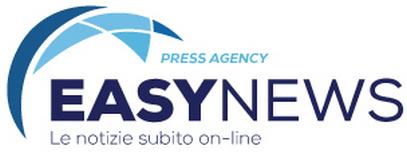Buon pomeriggio,
inviamo di seguito il commento “BCE: Lagarde tra certezze e timori” a cura di Nadia Gharbi, Senior Economist di Pictet Wealth Management.
Restiamo a disposizione.
Un caro saluto,
Lucrezia Pisani
+39 3476732479
BCE: Lagarde tra certezze e timori
- Come ampiamente previsto, la BCE ha lasciato invariati i tassi di interesse nella riunione odierna del Consiglio direttivo (CG). La sessione di domande e risposte che ha seguito la decisione è stata in gran parte un “da un lato, dall’altro”: da un lato, la fiducia del Consiglio direttivo che l’inflazione convergerà verso l’obiettivo nel medio termine sembra ancora forte; dall’altro, l’inflazione rimane apparentemente troppo alta, il che invita alla cautela.
- Nella dichiarazione rilasciata dopo la riunione, la BCE ha giudicato l’inflazione “ampiamente in linea” con le tendenze delineate nelle proiezioni di giugno, giustificando lo status quo. Sul fronte della crescita, tuttavia, è stato rilevato che i recenti indici dei responsabili degli acquisti (PMI) indicano un rallentamento del ritmo di espansione nel 2° trimestre e che i rischi per la crescita economica sono inclinati verso il basso (mentre a giugno erano stati considerati “equilibrati” nel breve termine).
- I commenti del comunicato sull’inflazione a breve termine sono stati equilibrati. Da un lato, l’inflazione di fondo appiccicosa di maggio è stata considerata come dovuta a “fattori una tantum”, mentre la maggior parte delle misure è rimasta “stabile o in calo a giugno”. L’impatto inflazionistico dell’elevata crescita dei salari è stato attenuato dai profitti. D’altra parte, secondo il comunicato, “le pressioni sui prezzi interni rimangono elevate, l’inflazione da servizi è elevata ed è probabile che il livello di inflazione complessiva rimanga al di sopra dell’obiettivo anche nel prossimo anno”.
- Se gli sviluppi a breve termine invitano alla cautela, la Presidente della BCE Christine Lagarde è sembrata più fiduciosa sulle prospettive di inflazione a medio termine. Ha affermato che il recupero dei salari avverrà per lo più quest’anno a causa dei processi di contrattazione salariale ritardati e diffusi in Europa, ma che la crescita dei salari dovrebbe moderarsi nel 2025 e 2026. Inoltre, ha sottolineato che il calo dei profitti unitari ha contribuito ad assorbire parte dell’aumento del costo del lavoro unitario e a smorzare la dinamica dei prezzi interni. In prospettiva, la ripresa dovrebbe essere rafforzata dall’aumento della produttività.
- Alla domanda su un possibile taglio dei tassi a settembre, Lagarde ha rifiutato di impegnarsi in anticipo, affermando che “quello che faremo a settembre non è ancora stabilito” e sottolineando che la BCE rimane dipendente dai dati. Vale la pena notare che i mercati valutano all’80% la possibilità di un taglio dei tassi a settembre. In questo contesto, è stato interessante sentire la Lagarde sottolineare che il Consiglio di amministrazione ha concordato all’unanimità con la proposta del capo economista di lasciare i tassi invariati oggi e che la valutazione si basa sulle aspettative del mercato per i tassi di interesse futuri, che prevedono tre tagli dei tassi entro la metà del 2025.
- Nel complesso, la BCE si attiene al suo approccio basato sui dati, riunione per riunione. I dati chiave da tenere d’occhio durante l’estate sono i rapporti PMI e sull’inflazione di luglio e agosto, nonché i dati sui salari negoziati del 22 agosto.
- Continuiamo a ritenere che, a meno di grosse sorprese nei dati in arrivo e di modifiche alle proiezioni dello staff, la BCE taglierà nuovamente i tassi a settembre e dicembre, portando il tasso di deposito al 3,25%.
ENGLISH VERSION
ECB: “Two-handed” Lagarde
- As widely expected, the ECB left interest rates unchanged at today’s Governing Council (GC) meeting. The Q&A session that followed the decision was largely an “on the one hand, on the other hand” affair: on the one hand, the GC’s confidence that inflation will converge to target over the medium term still seems strong; on the other hand, inflation apparently remains too high, calling for caution.
- In the statement released after the meeting, the ECB judged inflation to be “broadly in line” with the trends outlined in the June staff projections, justifying the status quo. On the growth front, however, it was noted that recent purchasing manager indexes (PMI) pointed to a slower pace of expansion in Q2 and that the risks to economic growth were tilted to the downside (while in June they had been seen as “balanced” in the near term).
- The statement’s comments on short-term inflation were balanced. On the one hand, the sticky core inflation in May was seen as due to “one-off factors”, while most measures were “either stable or declining in June”. The inflationary impact of high wage growth was cushioned by profits. On the other hand, “domestic price pressures remain elevated, services inflation is elevated, and headline inflation is likely to remain above target well into next year”, according to the statement.
- If short-term developments call for caution, ECB President Christine Lagarde seemed more confident about the medium-term inflation outlook. She mentioned that the catch-up in wages will mostly play out this year due to the delayed and diffuse wage bargaining processes in Europe, but that wage growth should moderate in 2025 and 2026. Moreover, she pointed out that the decline in unit profits has helped absorb part of the increase in unit labour costs and muffled domestic price dynamics. Looking ahead, this should be reinforced by rising productivity as the recovery takes hold.
- When asked about a possible rate cut in September, Lagarde declined to commit in advance, saying that “what we do in September is wide open” and stressing that the ECB remains data dependent. It is worth noting that markets are pricing in an 80% chance of a rate cut in September. In this context, it was interesting to hear Lagarde stress that the GC had unanimously agreed with the Chief Economist’s proposal to leave rates unchanged today and that the assessment was based on market expectations for future interest rates, which include three rate cuts by mid-2025.
- Overall, the ECB is sticking to its data-driven, meeting-by-meeting approach. Key data releases to watch over the summer include PMI and inflation reports for July and August, as well as negotiated wage data on 22 August.
- We continue to believe that, barring any major surprises in incoming data and changes to the staff projections, the ECB will cut rates again in September and December, bringing the deposit rate down to 3.25%.



